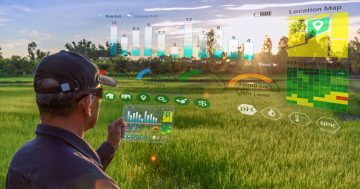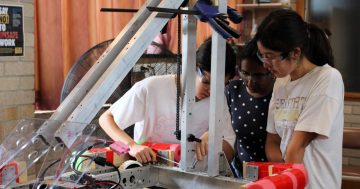 An Australian-first data project from the Department of Education has identified close to 30,000 different ways to move from school to work as well as the factors that influence earning and employment outcomes.
An Australian-first data project from the Department of Education has identified close to 30,000 different ways to move from school to work as well as the factors that influence earning and employment outcomes.
Commenting on the Department’s Pathways for the Future Pilot Project Summary Insights Report, Minister for Education and Early Childhood Learning, Sarah Mitchell said the Pilot Project mapped the work and study trends of 3.5 million students in senior secondary school through tertiary study and into employment.
Ms Mitchell said it used machine learning to examine de-identified demographic, education and employment figures from people in NSW aged 15 to 24 from 1996 to 2016.
She said findings from the Project would be turned into a data visualisation tool students could access to see different career paths and the employment prospects they may lead to.
“This Project is an opportunity for students to see how decisions made in Year 10 can influence their future education and employment and for schools to utilise the data to achieve the best outcomes for their students,” Ms Mitchell said.
“This is also a game changer for students and parents.
“It means that you can look at the career journeys of people who studied similar subjects in high school and see what employment outcomes it led to.”
Minister for Skills and Tertiary Education, Geoff Lee said the ground-breaking data found that completing an apprenticeship or traineeship could increase students’ chances of earning above minimum wage by age 24 by almost 13 per cent.
“This data will help us make evidence-backed decisions to boost students’ employment prospects when they leave school, whether that’s through a traineeship, a trade or a highly-qualified role,” Mr Lee said.
“The data will be used to help address skills shortages and gaps in the education system, while offering young people greater choice by arming them with the tools to make informed decisions on pathways to work,” he said.
“For example, the data showed students who performed well in Year 10, who had certain subject patterns in senior secondary school or who completed an apprenticeship and traineeship had significantly higher employment and earning prospects by age 24.”
Mr Lee said the Project also found students who left school early for vocational education and training (VET) could be as likely to earn above minimum wage as those who completed Year 12; that VET delivered to secondary students had a positive impact on student retention and employment outcomes; that for some occupations, VET and university study options led to similar employment outcomes at age 24; and that the chances of earning above minimum wage at age 24 could vary significantly by university field, for example 40 per cent for creative arts versus 67 per cent for nursing.
The Department’s 16-page Pilot Report can be downloaded at this PS News link.











